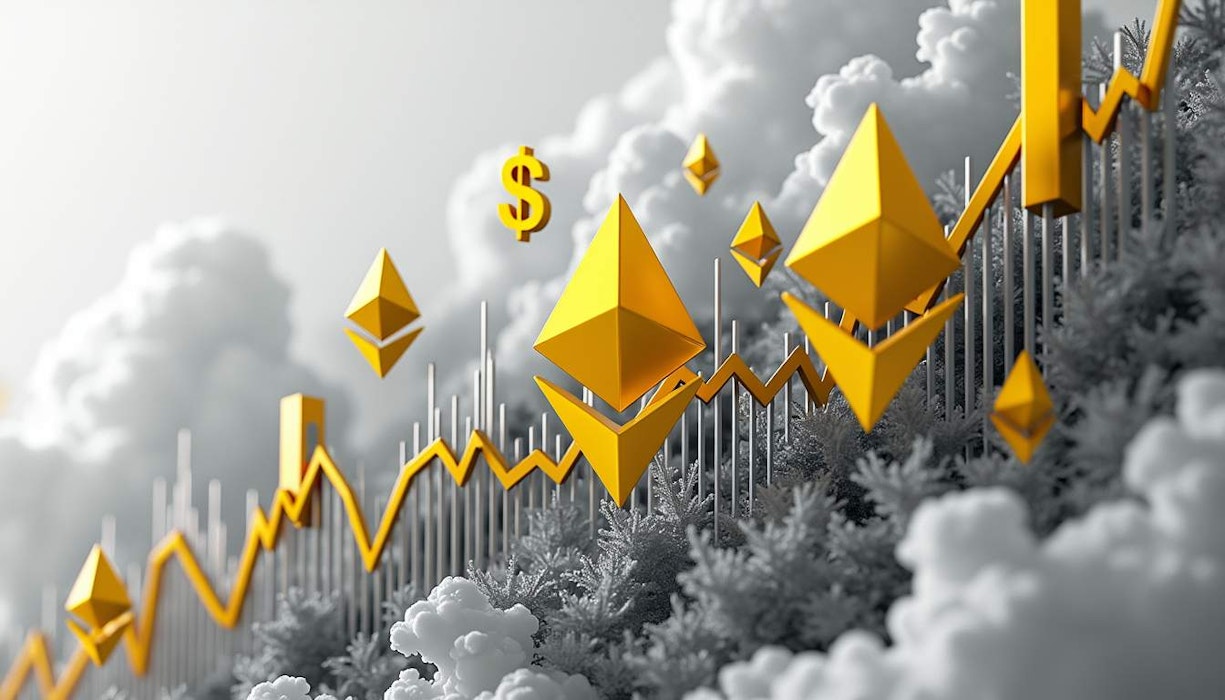When observing the price of Ethereum, it often feels like a choreographed dance steeped in consolidation patterns before sharp upward spikes. There’s a method to this perceived madness. So, what exactly drives these patterns? Let’s dive into Ethereum's past price shifts, the effects of halving years, and the ripples created by ETFs and whale movements on its market dynamics.
Patterns in the Price Movement
Ethereum's price patterns have piqued interest among traders and analysts for ages. While the world of cryptocurrencies is notoriously volatile, Ethereum’s price movements have their own unique rhythm. Recognizing these patterns can be pivotal for traders, guiding them toward informed decisions that may yield profits.
Consolidation and Upswings
If you look at the historical price patterns, you will notice Ethereum typically goes through consolidation phases before significant price increases. These consolidation phases tend to set the stage for major price rises, hinting at a strategic rhythm in market behavior. Take the period from May to mid-September, for example; ETH seemed to stabilize before climbing. The same pattern happened from November to December, preceding another price increase.
The data from these periods shows that Ethereum consistently regains strength before breaking higher. This cyclical behavior raises the possibility that Ethereum is poised for another rise following recent consolidation, a move that could echo previous patterns and potentially reach new heights.
External Influences
However, the reliability of such predictions relies heavily on external market factors and overall investor sentiment. News, social media, and global economic events can sway market sentiment in either direction. A piece of positive news can send prices soaring, while bad news can tank them. Regulatory changes and geopolitical events also come into play, shifting investor behavior and market trends.
The Halving Years Factor
Surges Post-Halving
Historically, Ethereum has displayed astounding growth in the first quarter post-halving years. Back in 2021, for instance, Ethereum's performance in March was nothing short of impressive, with a 34.74% return, mirroring its post-halving behavior in 2017. April of that year saw returns peak at an astonishing 214.11%, hinting at predictive behavior.
This cyclical trend suggests that ETH may be on the brink of another surge, indicating its resilience and its appeal to investors who recognize the impact of halving cycles. Understanding these historical patterns can be crucial for traders anticipating potential price movements.
The Role of ETFs and Whales
ETF Inflows
This week, despite a 16% drop from last week's high of $4,100, Ethereum ETFs received over $2.5 billion in inflows. These inflows occurred as prices fluctuated, reflecting strong investor confidence. Interestingly, December witnessed outflows that marked the largest price drops, at $49.2 million and $75.1 million.
However, the steady inflow across various ETFs, such as the Grayscale Ethereum Trust, indicates persistent interest, hinting at potential underlying strength in ETH sentiment that could stabilize or even raise prices if investor interest continues.
Whale Activity
The recent activities of the whale associated with Nexo on Binance revealed substantial ETH price movements. This whale recently transferred 4,946 ETH, valued at around $17.2 million. Such large-scale transfers are part of a broader pattern that has been observed since December 2, where a total of 114,262 ETH, worth around $423.3 million, were moved to Binance at an average price of $3,705.
Such massive transfers often precede significant market movements, hinting at possible future volatility in Ethereum's price on the exchange. Monitoring whale activities can provide traders insights into potential market shifts.
Factors Affecting Ethereum's Price
Market Sentiment
Market sentiment, heavily influenced by news and social media, is a key driver of Ethereum's price movements. Positive news can propel prices upward, while negative news can trigger declines. Keeping up with the latest developments and sentiment is essential for traders.
Regulatory Environment
Regulatory changes can profoundly affect Ethereum's price. Stricter regulations can lead to investor caution, while a favorable environment can boost confidence and prices. Traders should stay vigilant for regulatory developments and adjust their strategies accordingly.
Global Events and Economic Trends
Global events, such as wars or political unrest, can drive investors toward more stable assets, impacting Ethereum's price. Additionally, macroeconomic trends like inflation and interest rates can guide investor behavior, where high inflation may increase crypto's appeal and rising rates have the opposite effect.
Summary
Ethereum's price movements reveal a calculated rhythm in market behavior. With consolidation phases leading to upward spikes, understanding these patterns, along with external factors, can provide insights for crypto traders. By staying informed and analyzing these elements, traders can better navigate Ethereum's volatile market and make informed decisions.
While historical price patterns offer insights, they should complement other analyses like fundamental assessments and risk strategies to address the uncertainties inherent in the cryptocurrency market.
